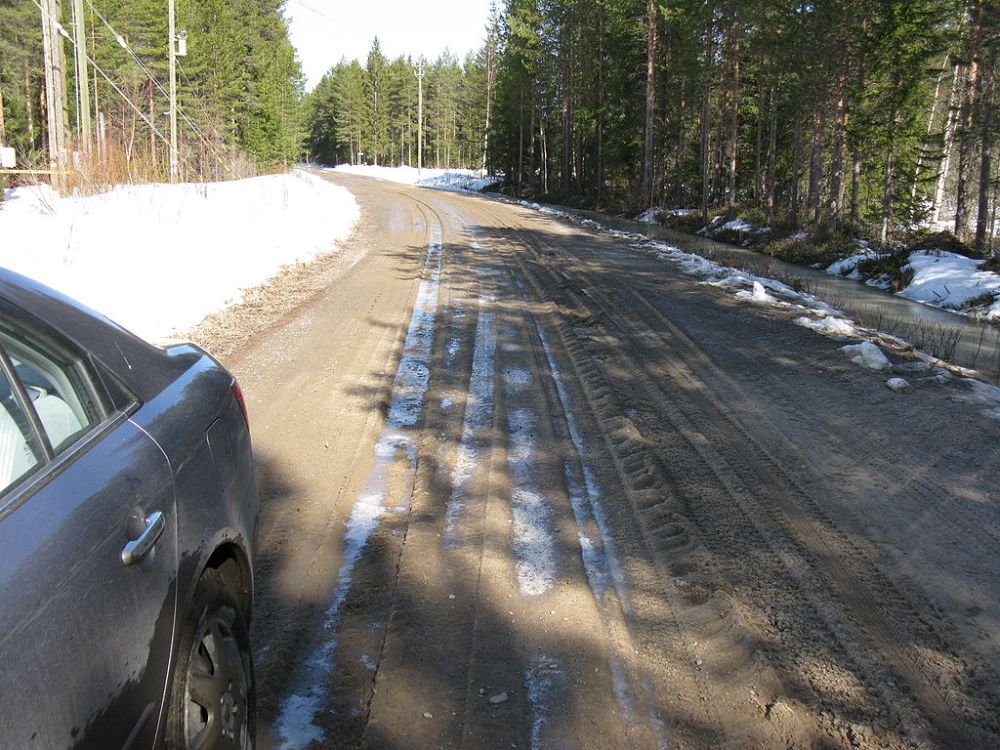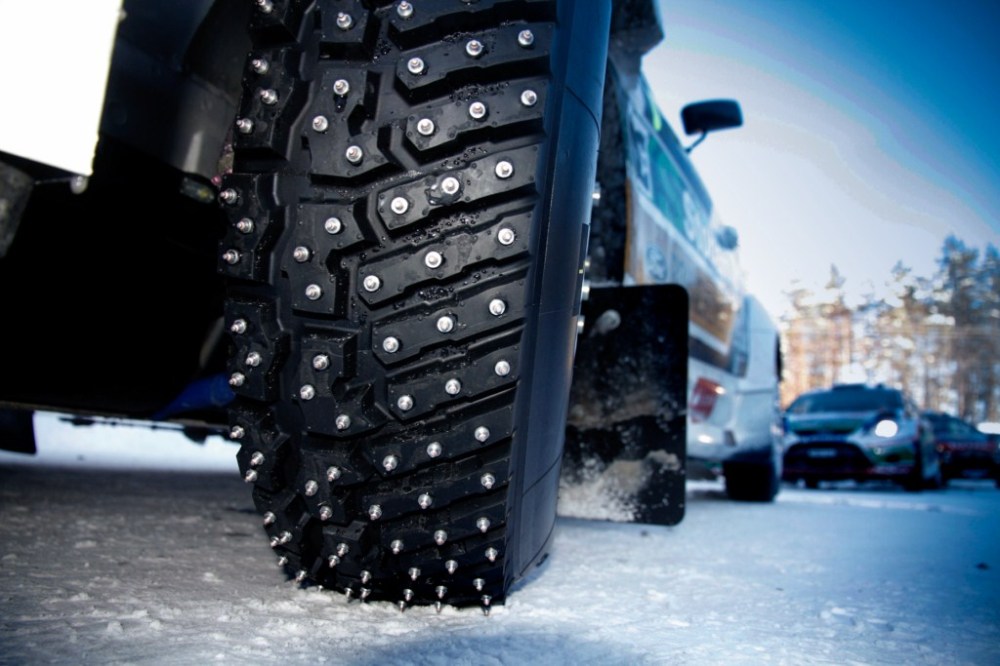The lack of snow and ice has forced the organizers of Rally Sweden to come up with a reduced route. This post introduces it and sums up why this happened, and why can’t they run on the stages without snow.
Cover image by Richard Simpson / Flickr (C)
The winter has been exceptionally warm and there has been little snow in Värmland, where Rally Sweden should be run next week. This has proposed a threat of canceling the whole rally, but the organizers wanted to push on with the rally. The FIA representatives ran through the route and decided to cancel the southmost stages of the rally, giving green light to the event. Thus, the new itinerary of the rally will most likely be as follows:
Thursday
9.00 SD Skalla
20.08 SD2 Karlstad
Friday
8.42 SS2 Hof-Finnskog 1
10.08 SS3 Finnskogen 1
11.08 SS4 Nyckelvattnet 1
15.00 SS8 Torsby Sprint 1
Saturday
8.42 SS5 Hof-Finnskog 2
10.08 SS6 Finnskogen 2
11.08 SS7 Nyckelvattnet 2
15.00 SS16 Torsby Sprint 2
Sunday
10.08 SS17 Likenäs 1
12.18 SS18 Likenäs 2 (Power stage)
Note that the stage numbers cannot be altered after the original documents.
Practically this means that the Saturday stages Torntorp, Vargåsen and Hagfors were omitted, as is the long version of the Torsby stage. This is a tough decision as they are some of the most spectator-heavy stages of the rally. It’s like cancelling Kakaristo from Finland or the Turini area from Monte.
The route full length adds up only to 171 km although the press release talks about 180 km so possibly some stage, maybe Torsby Sprint, is lengthened. However, the teams and FIA have agreed together that full points are awarded.
12.2. Karlstad was made a shakedown instead of a normal super special. All cars will drive through the track once one car at a time, and the same set of tyres is used for both shakedowns. Skalla shakedown requires only one run from P1 drivers, the rest can run it but it’s not mandatory.
The conditions which led to the altering
The Facebook group Enthusiasts of Rally Sweden has provided a great number of photos from the route in the last weeks, with conditions varying from passable to completely void of snow.
As we can see, the canceled stages had no snow at all, whereas the stages that will be run had at least some snow or ice. Driving without snowbanks could lead into heavier cutting of ditches. This combined with possibly high grip without snow on the road could lead into high speeds.
Why can’t they run on the stages with no snow?
Gravel roads in Nordic countries are typically graded from old horse paths compared to purpose-built all-gravel logging roads which are typical for example in Wales. If the road is wet and unfrozen, it will be damaged by rally cars with studded tyres. The roads typically get damaged anyway during the spring thaw.

Road deterioration during the rally first of all could cancel the second run of the stage or make it har already for later starters in FWD cars to finish the stage. Secondly, it will create a big post-rally road repair bill to the organizers.
Furthermore, the studs would fly off the tyres in a matter of kilometres while driving on gravel. A subsequent icy section could then be treacherous to the driver.

Why not make it a gravel or mixed rally?
In fact, this would be interesting, to make it a bit like Monte Carlo but on gravel roads. However, there are many reasons why it wouldn’t work.
First of all, the regulations state that a snow rally can only offer snow tyres of one kind and a gravel rally can only offer gravel tyres of one kind, in two compounds. There would have to be an exception for this. It’s another question whether Michelin could deliver the required amount of gravel tyres to Sweden on this short notice.
Another factor is that the available softest “soft” gravel tyres are designed to operate on warmer temperatures. The drivers would have very little grip in temperatures around 0°C. A “supersoft” compound would be needed. I’m not sure if Michelin makes one, but for sure it would make another exception to the regulations.
Another solution could be a non-studded version of the winter tyre. However, in warm weather the roads wouldn’t bear the rallying anyway.
How much can they cancel stages?
The regulations say that the rally must run 75% of its competitive distance in order to award full points. If less than 50% of the stages are run, only third of the points are awarded. And if only 25% or less of the route is run, no one gets any points.
In the case of Rally Sweden, the original route length was 300.84 km. If they hadn’t made their plan B, 75% would have been 225 km, and 50% is 150 km. The absolute minimum would have been 75 km, to award any points.
However, the regulations state that “in exceptional circumstances, the FIA may decide to apply a different principle for the attribution of reduced points”, and this is what has happened here. Now the percentages are calculated from the shortened itinerary, which practically means that two canceled long stages reduces the length to 75%. In the case that every long stage is run only once, they could still manage together half of the length.
Has this happened before?
Rally Sweden 1990 was infamously cancelled because of lack of snow. There has been years with very little snow, such as 1997 or 2000 but at least a good part of the route has had an ice layer. The 2016 rally also had to cancel a number of stages because of lack of snow, but most of the stages were managed to run fine.
Will this happen again?
Weather is difficult to predict. However, Rally Sweden should be better prepared for this. Even now we can see a difference between the stages which are situated North of Torsby, and those more in the South. Mads Østberg also showed that the conditions are decent for snow rallying just 40 km more to the North
Another example was posted to the Enthusiasts of Rally Sweden group from a place called Lima, slightly North from the Likenäs stage.
In addition, we can always look back into previous editions of Rally Sweden with more Norwegian stages such as Svullrya and Röjden from last year, Opaken from 2012 or Mitandersfors from 2013. Northern stages from Sweden such as Viggen from 2010 could also work.
Having more of stages up North would secure more snow, but they would also be located further and further from Karlstad, which still operates as a financial partner of the rally, and supplier of accomodation for the spectators.
It’s for sure difficult to balance between these two factors, but a cancelled rally is not better than a rally far from the big city. If this keeps happening, FIA will for sure look elsewhere for organizing a snow rally.
Will the rally run for sure?
Of course, there’s still the risk of the weather turning worse. There’s plus degrees forecasted until the rally with some rain on the weekend. Doing two runs on the stages is not guaranteed. But canceling at the last minute would be a bad decision for all parties.
Follow It Gets Faster Now! on twitter for newest updates!
EDIT 5.2. Updated info about full points agreement, shakedown, Østberg test and weather forecast. Added more examples of Northern stages.
EDIT 6.2. Added new itinerary
2 thoughts on “Rally Sweden 2020 route altered”